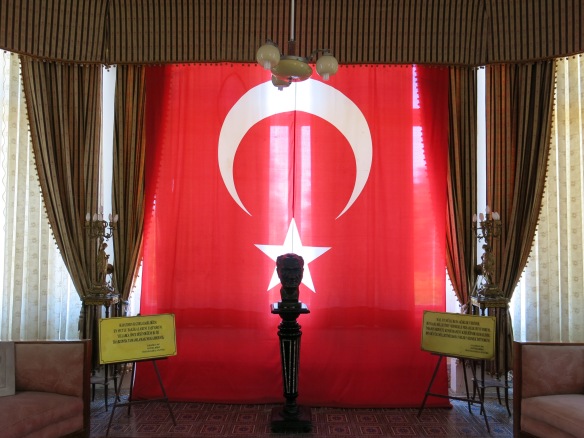
Bust of Ataturk silhouetted against the Turkish flag – Ataturk Mansion Museum in Trabzon Turkey.
Modern Turkey owes its very existence to their first great leader Mustafa Kemal, better known as Attaturk to millions of Turks and others around the world. “Ataturk,” which means “father of the Turks,” was an honorific name bestowed upon him in 1934. As a young army officer in the Ottoman Empire, he served with distinction and rose rapidly through the ranks. His successes did not stop him from being critical of the oppressive Ottoman political and social policies.
When the Ottoman Empire fell apart at the end of World War I, he led the nationalist movement in the Turkish War of Independence, which eventually resulted in the founding of the modern Turkish state.
As Turkey’s president, Ataturk instituted a number of wide-sweeping reforms that brought the country squarely into the 20th century as a secular nation with political and social equality for all. Education of all men and women became a priority, as did granting both political and civil rights to all individuals, regardless of gender, religion or ethnic origins. Trabzon’s claim to fame vis a vis Ataturk is the Ataturk Mansion Museum, a lovely early 20th century villa on a hilltop overlooking the city.
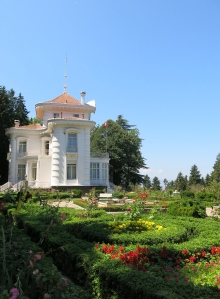
Ataturk’s mansion, given to him by the city of Trabzon
As we were to discover, claiming a house as belonging to Ataturk is somewhat akin to all the historical plaques in the U.S. that claim, “George Washington slept here.” In the case of the house we visited in Trabzon, the true story is even fuzzier.
According to whichever source you believe, Ataturk slept here only one night or two or three. Regardless, the city of Trabzon in the 1930′s gave the mansion to him in appreciation for his leadership; decades later the local government turned it into a museum in his honor. Photography was forbidden in the house, which I discovered only after taking the opening photo of Ataturk’s bust silhouetted against a sunlit Turkish flag.
In contrast to Ataturk’s modernized nation — which has continued and prospered throughout the 20th c. — Turkey today has a vocal minority faction that wishes to de-secularize Turkey and return it to an Islamic state.
Almost all of the demonstrations the last two years have been, at the root, about the increasing conservative direction of the current national leadership, be it secular or religious. Younger, urbanized, Westernized Turks want a change in government leaders and a return to a fully democratic state.
More conservative people, especially recent immigrants from former republics of the Soviet Union, Syria and Iran, as well as less urbanized populations, approve of the increasingly autocratic, right-wing faction lead by the current prime minister,and egged on by religious leaders. Obviously, this is an over simplification of a complex, multi-ethnic society and the myriad of issues facing Turkey. Nevertheless, the rise of increasingly right-wing, conservative Islam leaders, laws and actions indicate the changing political landscape in Turkey. Unfortunately for us, as tourists, one result of this growing trend came to the fore during our day in Trabzon.
The Hagia Sophia of Trabzon
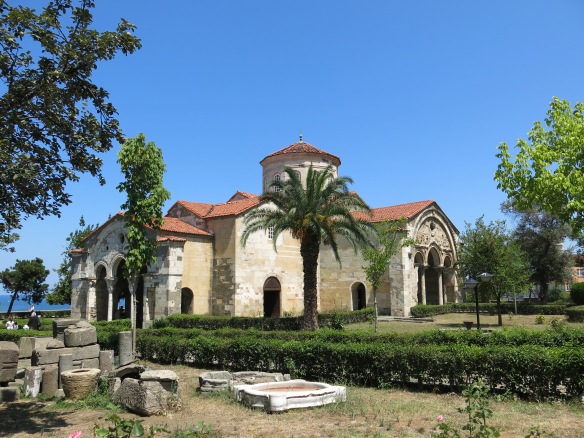
The Hagia Sophia (above) in Trabzon is a mid-13th c., late Byzantine-style church. For over 200 years this architectural gem remained in use as a Greek Orthodox church. When Sultan Mehmet II conquered the Trabzon region in 1461, he ordered the church converted to a mosque.
In 1964, the government turned the building into a museum that acknowledged the heritage of both Christianity and Islam. In 2013 local Islamic leaders won a suit to convert the museum back into a mosque, with the intention that it can only be entered by Muslims.
Our guide told us that there are plans to remove or plaster over the beautiful interior frescoes and mosaic tiled floors; at this time, the interior art is mostly covered with sheets or rugs. Local architects and historians, supported by various international groups, have filed a counter suit against the Ministry of Religion to return the mosque/church to a secular museum. (Go to www.facebook.com/TheHagiaSophiaInTrabzonMustRemainAMuseum for several pictures of the former church’s interior as well as updates on the suit.)
Some particularly beautiful frescoes are sheltered under one of the porticoes. A few had sustained irreparable damage, but others had been restored quite nicely.
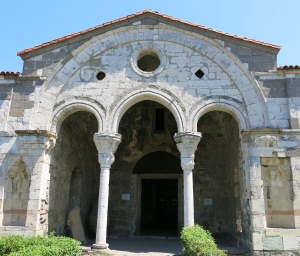
Portico of former Hagia Sophia of Trabzon.
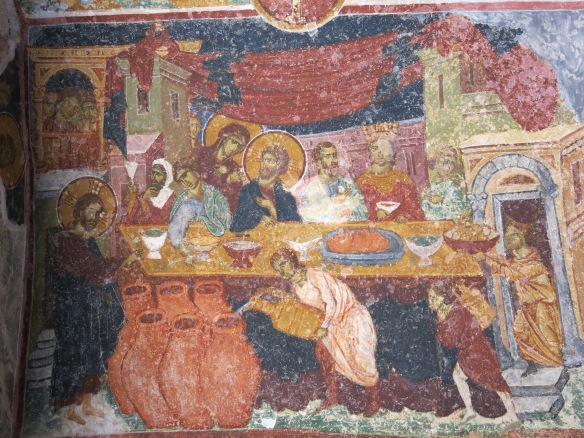
Fresco possibly depicting the Last Supper.
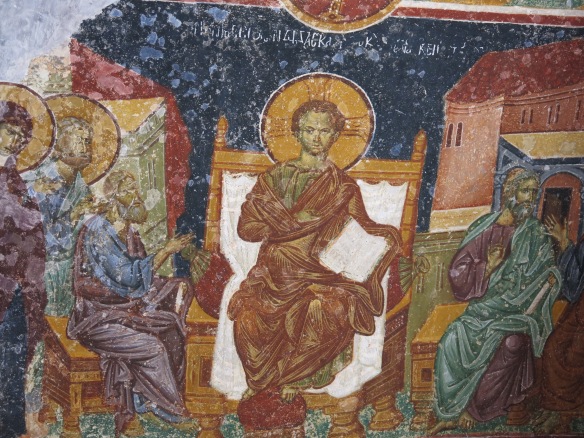
Fresco of Jesus.
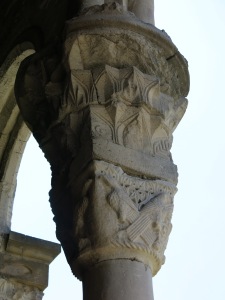
Sculptural detail on portico column
It seems to me a shame that such an historically and architecturally important site as the Hagia Sophia church, now mosque, should be forbidden to all but one group. More difficult to grapple with is that there is a real chance that much if not all of the beautiful Christian-inspired artwork could be removed or plastered over.
One doesn’t have to be of either the Christian or Muslim faith to appreciate the fresco art and mosaic floors of the former church. Is religion truly a sufficient reason to keep interested art lovers from seeing these treasures — or worse — destroying them for all time? Would it not make more sense to keep the Hagia Sophia as a secular museum, open to all?
![]()

Carol Barbier Rolnick grew up in Japan and Southeast Asia, traveling extensively as a child through Asia, the Mideast and Europe on family vacations. Travel has continued as a priority through raising kids and continuing into retirement, extending adventures through the Americas, southern Africa, Asia, and repeat trips throughout Europe. Carol and her husband, Michael spent four summers based in Utrecht, The Netherlands, which has become like a second home. They are (still) aiming towards Australia-New Zealand and Antarctica to round off their continental travels.








